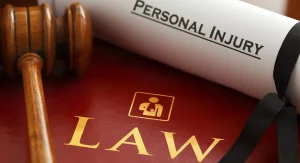What To Do When an Employee is Injured at Work
By TOI Staff
January 28, 2023
Update on : January 28, 2023

Workplace injuries can be a scary and challenging experience for both the employee and the employer. Not only is it important to provide immediate, appropriate medical care and ensure the health and safety of all affected, but there is also the matter of navigating the legal and regulatory requirements that come with a workplace injury. Federal and state workers’ compensation laws require employers to provide workers’ compensation insurance and benefits to employees who are injured at work.
So, as an employer, you want to ensure you comply with all necessary laws and regulations while also providing your injured employee with the best possible care. Thus, knowing what steps to take when an employee is injured on the job can help you manage the situation effectively and ensure the wellbeing of everyone involved.
Here’s a detailed breakdown of what to do when an employee is injured at work.
Provide Immediate Medical Care
Whether the injury is minor or more severe, the first priority for any employee who has been injured at work is receiving appropriate medical care. This includes both preventing further damage and ensuring the injury does not cause long-term health complications.
While certain injuries may not require hospitalization, it is crucial that injured workers visit an emergency room for examination and treatment. The extent of the injury and the amount of time between the injury and medical treatment are important factors to consider when determining treatment.
It is important to follow any specific medical advice given to you by your employee’s doctor, including the need for specific diagnostic tests.
Document Details of the Incident Leading Up to the Injury
Documenting the injury is another important step in caring for an injured employee. This documentation is critical in meeting your legal obligations and ensuring the injured employee is appropriately compensated.
The written report should include the date and time of the incident, the location, a description of what happened and the names of any witnesses. You should also include details about the employee’s condition, the first aid provided and any medical treatment.
Taking pictures can also go a long way in ensuring the insurance company pays compensation.
File All Necessary Claims
After providing immediate medical care and documenting the injury, it’s time to file all necessary claims.
Your state’s workers’ compensation board will have specific requirements for reporting an injury, including the information you must include and where the report should be submitted. Once you have reported the injury, the board responsible will investigate, compile information and make a determination about the employee’s eligibility for benefits.
Stay in Communication With the Injured Employee
While you are handling the legal and regulatory requirements of the injury, it’s also important to stay in communication with the injured employee. Stay in touch with the employee to provide updates about the injury and treatment, keep them informed of the progress of any claims and answer any questions they may have.
Letting the employee know that you are available during their hardship and that you are doing everything you can to help is a great way to both support the employee and protect your company.
Ensure a Safe Work Environment
In addition to providing immediate medical care and completing the proper administrative tasks, you also have a legal obligation to ensure a safe work environment. This means taking appropriate steps to identify and remove any hazards that may have led to the injury.
This can include anything from installing additional safety equipment and proper lighting to making design changes to the work environment. It is important to remember that each incident is unique, and you are required to take appropriate action based on the specific circumstances. Identifying and addressing hazards in your work environment can help you protect your employees and prevent future injuries.
In Conclusion
Workplace injuries can be both emotionally and physically devastating for employees. So, whether it is an on-the-job accident or an illness caused by the work environment, employers are responsible for providing the necessary medical care and support to their employees.
In such cases, employers need to be proactive in taking the necessary steps to ensure their employee’s safety and well-being. By doing so, employers can show that they care about their employees and create a safe and healthy work environment.















